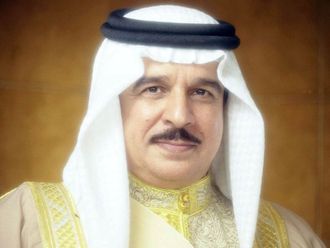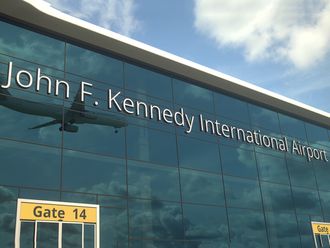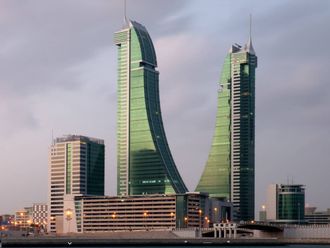
Manama: At a wake in Iran’s holy city of Qom in February, a small group of Bahraini émigrés and clerics mourned a young militant killed in a gun battle with Bahrain’s security forces.
The eulogy was delivered by an exiled Bahraini cleric who has called for the overthrow of the Bahraini monarchy.
The cleric, Murtada Al Sanadi, has been named by the United States as a “specially designated global terrorist” backed by Iran.
The ceremony shines a light on Iran’s widening influence over an armed terrorist cell operating in Bahrain. A quickening tempo of mostly crude bombing and shooting attacks has accompanied a government crackdown on antigovernment protesters, which culminated last year in the dissolution of the main opposition bloc, Al Wefaq.
The dead 29-year-old militant, Reda Al Ghasra, was shot and killed when security forces ambushed the speedboat carrying him and fellow fugitives at dawn on February 9.
Al Ghasra had just a few weeks earlier escaped from a prison where he was serving a life sentence for terrorism.
Al Ghasra’s two brothers, both wanted on militant charges, also appeared at his wake in Qom. They played a recorded phone call of Reda saying his boat was on its way. The Bahraini government has asserted he was fleeing to Iran.
A confidential assessment by Bahrain security officials names Al Sanadi as the leader of the Ashtar Brigades, a militant group that has carried out bombings and shootings directed at the kingdom’s police. In a statement online, the group hailed Al Ghasra as a “martyr commander” on his death.
According to the security assessment, Al Sanadi tasked Al Ghasra with forming militant cells with Iranian help.
Iran regularly denies such accusations.In 2011, antigovernment protests in Bahrain were largely quelled with the help of Saudi and UAE forces.
Low-level protests followed.
Scores of militants have been killed in clashes with police, while Bahrain says 24 of its officers have been killed.
An analysis of years of statements by Bahrain’s public prosecutor on Ashtar Brigades suspects suggests that the group operates in cells of fewer than 10 young men overseen by émigré militants like Al Sanadi based in Iran.
Recruited on religious pilgrimages or study trips to Iran, Bahrain’s prosecutor has said, the suspects were given weapons and explosives training in Iran or neighbouring Iraq. Al Sanadi has powerful allies in Iran, where he has lived since he went into exile in 2012.
The official website of Iran’s Supreme Leader Ali Khamenei published an editorial by Al Sanadi in December accusing the US of helping repress Shiites in Bahrain.
The US State Department put Al Sanadi on its proscribed “terrorist” list on March 17. His name appears alongside leaders in Al Qaida and Daesh. The US cited Al Sanadi’s links to the Ashtar Brigades which, it said, “receives funding and support from the Government of Iran.” Bahrain accuses Al Sanadi of having organised deadly attacks on police and smuggling arms from Iran.
According to Bahraini security dossiers on Al Ghasra and Al Sanadi, Bahraini authorities consider the Ashtar Brigades to be the armed wing of Al Sanadi’s Islamist Wafa Movement, a political party that is banned in Bahrain.
Wafa and the Ashtar Brigades did not respond to requests for comment about their relationship. A Wafa party representative contacted by journalists agreed to relay questions to Al Sanadi but did not ultimately reply.
Al Sanadi, the security documents say, receives funding from the Iranian Revolutionary Guard Corps (IRGC) and commissioned Al Ghasra to organise the military training of Bahraini militants in Iran by the IRGC and in Iraq by the Hezbollah Brigades militia.
The Ashtar Brigades announced an alliance with the Iran-backed Hezbollah Brigades via an online statement in February.
Bahraini security officials denied Al Sanadi suffered torture in custody.
“There have been isolated abuses which have been investigated and addressed but this is not a systematic phenomenon,” said one official.
In January, Al Sanadi called on Bahrain’s opposition to abandon street protests in public squares and to take up arms.
“From today and hereafter, the period has changed. We in the Wafa Movement announce that we have begun a new phase: one grip on the squares and one grip on the trigger!” he said in a speech in Qom.
Iran’s promotion of Al Sanadi appears to point to an endorsement of his agenda. Next to an Iranian flag and an anti-Saudi Arabia banner, Al Sanadi delivered a sermon at Friday prayers in the country’s most prestigious mosque in Qom in September — an exceptional honour.
Al Sanadi also took to the main stage at a 2013 conference of Ahl Al Bayt, a Qom-based global fraternity of scholars founded by Khamenei in 1990. The meeting commemorated Bahrain’s uprising.
“We are truly thankful to the Iranians, especially, Ayatollah Khamenei,” Al Sanadi declared.












